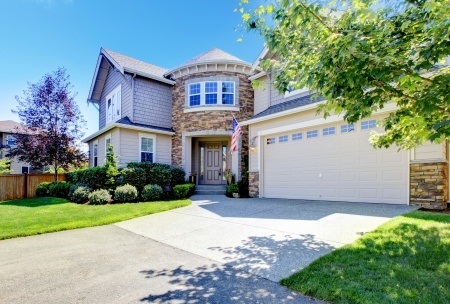Want a Quick Mortgage Approval? Come Prepared With These 5 Key Items
 Whether you’re finally prepared to get into the real estate market or you want to know how you can make a deal quick, there are a few necessary documents you’ll need to prove your reliability to a mortgage lender. If you’re wondering what will be involved in getting the application approval you’re looking for, here are the documents you’ll want to have on hand when the time comes.
Whether you’re finally prepared to get into the real estate market or you want to know how you can make a deal quick, there are a few necessary documents you’ll need to prove your reliability to a mortgage lender. If you’re wondering what will be involved in getting the application approval you’re looking for, here are the documents you’ll want to have on hand when the time comes.
Previous Tax Returns
In order to ensure the earnings information you’ve provided to the lender, you’ll have to have your tax returns for the two years prior to your mortgage application. In addition, you may also be required to provide your W-2s as backup documentation.
Bank Statements
To make sure you’re a solid bet who will be able to make your down payment, you’ll need to present bank statements to ensure you have a cushion in the case that interest rates increase. If you do get money gifted to you for your down payment, you’ll need a letter to prove you’re not indebted to the provider.
Recent Paystubs
It can be much more difficult to get approved for a mortgage if you have a patchy work history or happen to be self-employed, so you’ll need 2 months of recent pay stubs to prove consistent employment. The paystubs provided should also be an accurate reflection of the salary you’ve provided on your application to ensure no discrepancies.
Investment Statements
It’s certainly a good sign to the lender if you have a healthy balance in your checking and savings accounts, but you’ll also need to provide any statements for mutual funds and other investments. While they may not be necessary to prove financial soundness, they will help with approval if you have a lot of money squirreled away.
A Listing Of Debts
While it may be the least popular of the pile, a lender will also want to know about any outstanding debts like auto loans, credit card payments or student loans. It may be tempting to forego these documents, but it will give the lender a good sense of your honesty and your ability to manage your mortgage.
Mortgage approval may seem like a time-consuming process with no certain end, but by having the appropriate documentation and being upfront about your debts, you may be able to speed up the timeframe. If you’re currently perusing your mortgage options, contact one of our mortgage professionals for the inside scoop.
 Last week’s economic news included readings on sales of new and previously owned homes. Despite expectations of lower sales in both categories, sales surpassed expectations and April sales. Analysts were concerned about extremely tight inventories of available homes limiting home sales and did not expect May home sales to increase.
Last week’s economic news included readings on sales of new and previously owned homes. Despite expectations of lower sales in both categories, sales surpassed expectations and April sales. Analysts were concerned about extremely tight inventories of available homes limiting home sales and did not expect May home sales to increase. Investing in a home is a big financial decision, and along with the decision to buy is the question of how much mortgage you’ll be able to afford. While your debt-to-income ratio can be helpful in determining the range for your mortgage amount, a mortgage calculator can be a beneficial tool in coming to a potential price. If you’re curious about how and if this financial tool can benefit you, here are the details about using a mortgage calculator.
Investing in a home is a big financial decision, and along with the decision to buy is the question of how much mortgage you’ll be able to afford. While your debt-to-income ratio can be helpful in determining the range for your mortgage amount, a mortgage calculator can be a beneficial tool in coming to a potential price. If you’re curious about how and if this financial tool can benefit you, here are the details about using a mortgage calculator.